![]()
![]()
![]()
Use LEFT and RIGHT arrow keys to navigate between flashcards;
Use UP and DOWN arrow keys to flip the card;
H to show hint;
A reads text to speech;
29 Cards in this Set
- Front
- Back
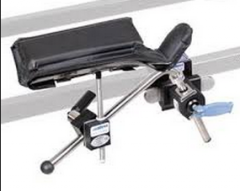
|
Allen Armrest: used to hold both arms when prone, or one arm when lateral.
|
|
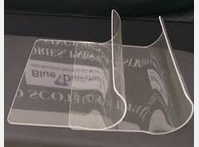
|
Arm Sled: used to hold patient's arms at their sides when the patient is too wide to safely tuck. Make sure to pad with pink foam. Compatible with c-arm
|
|
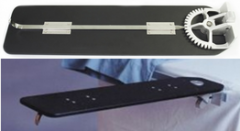
|
Armboard: Comes with pads of differing thickness. Make sure the height of the armboard pad matches the height of the bed's mattress. Pad with additional pink foam for long cases. Some versions not compatible with c-arm
|
|

|
Beach Chair Positioner: used to hold patient in semi-sitting position. Shoulder surgeries and ORIF Humerus are most common usage. Lives on a rolling rack, usually found in the red-tag storeroom or equipment room across from breakroom. Compatible with c-arm
|
|
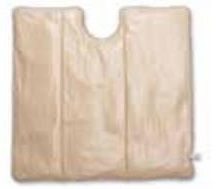
|
Bean Bag Positioner: Used to hold patient in lateral position for thoracotomy or nephrectomy. Sometimes used for laparascopic hysterectomy to hold patient in place on the bed during steep trendelenberg. Not compatible with c-arm.
|
|

|
Black Bracket/Square Bracket: used to clamp positioning items to the bed. Only accepts square posts. Good idea to have at least two in every room
|
|
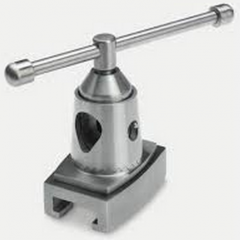
|
Round Bracket/Clark Socket: used to clamp positioning items to the bed. Only accepts round posts. Good idea to have at least two in every room
|
|
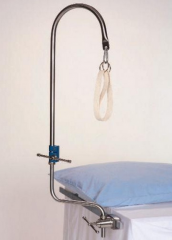
|
Candy Cane Stirrup: one is used to hold the leg during hip preps (lateral position). Two needed for D&C cases. Needs round bracket x1 (hip) or x2(D&C)
|
|

|
Disposable stirrup strap: single use item. should come on case cart, but if not, they live in central (or in pyxis room top cabinet)
|
|
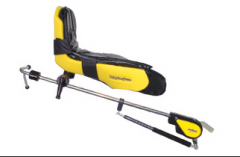
|
Allen Stirrups/Yellow Fin stirrups: used for almost every GYN, Urology case, and any general surgery case in which the lithotomy position is needed (left colon resection, hemorrhoidectomy, rectal cases). Requires two square brackets. Usually found on a ring stand or rolling cart in equipment room or OR 4
|
|

|
DeMayo hip positioner (only 4 pcs shown--our version comes with 2 additional pieces): used to place patient in lateral position for hip surgeries. Requires two square brackets. Lives in OR 3 & 8, and sometimes in 5.
|
|
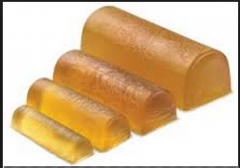
|
Gel Rolls: used in pairs as chest rolls for prone position (short cases only--general surgery, plastics, wound care). Finding two of the same length and diameter can be a challenge, so start looking early. Can also be used singly for semi-lateral position or as a generic "bump". Not compatible with c-arm
|
|
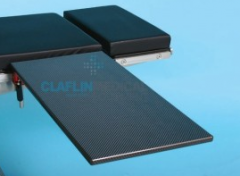
|
Hand Table: used for arm/hand cases (plastics, vascular, ortho). Needs two round brackets. Compatible with c-arm.
|
|

|
Leg prop: used to hold leg (or really big arm) for prep. Sometimes wound doc will use it to hold leg for a quick debridement. Needs one round bracket. Not compatible with c-arm.
|
|
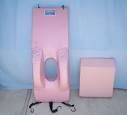
|
Cloward Saddle (ours is blue/grey): Used for holding patient prone during spinal surgery. Only used by Dr. Henstorf. Lives in Equipment room across from breakroom, or in OR 5. Compatible with c-arm.
|
|
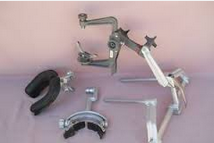
|
Mayfield head holder: Has a horseshoe attachment and a tongs attachement. Also has adapters to fit on Amsco or Skytron bed--make sure you have the right one. Lives on a rolling pegboard cart. Usually found in equipment room across from breakroom or in OR 4 when not in use. Not compatible with c-arm.
|
|
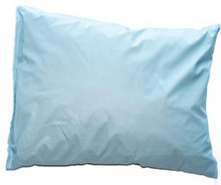
|
Pillow: used for padding legs in prone/lateral position, between the arms in lateral position, under the knees for supine position. Compatible with c-arm. Usually found on top of linen cart outside PACU.
|
|

|
Pink foam: generic positioning pad, used for everything. Found in each OR, or on blue cart outside OR 4
|
|

|
Proneview: used to hold the head during prone positioning. Comes in 3 pieces (mirror, plastic mask, disposable insert). Re-usable pieces live in utility room, disposable pieces live in anesthesia equipment room
|
|
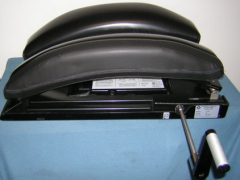
|
Wilson Frame: used to hold patient in prone position for spinal surgery. Make sure you also have the crank that adjusts the height of the curve. Can be attached to Jackson table or to a regular OR table. Compatible with c-arm. Usually lives on the Jackson table, in the equipment room across from break room.
|
|
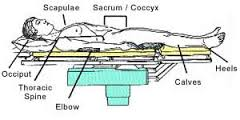
|
Supine position: can be arms-out or arms-tucked. Used for cases that need to access, head, arms, neck, chest
|
|
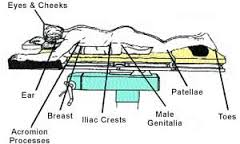
|
Prone: used for cases that need access to the back of the head/neck, spine, sacrum, posterior legs. Multiple varieties of positioning aids used, depending on the type of surgery to be performed.
|
|
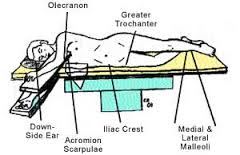
|
Lateral: used for cases that need access to the chest, retroperitoneal, hip areas. Multiple positioning aids used, depending on type of surgery to be performed.
|
|
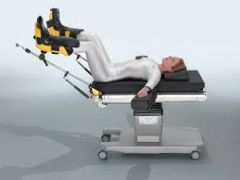
|
Lithotomy (low): used for access to the perineum. Adjustable stirrups like allen/yellowfin are used for long cases or large legs.
|
|

|
Lithotomy (high): used for minor gyn cases (D&C, cervical conization, cervical cerclage, etc). Adjustable stirrups like allen/yellowfin can be used for long cases or large legs.
|
|
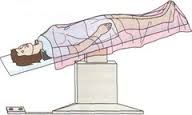
|
Trendelenberg: used for cases where the surgeon needs gravity to shift the abdominal contents toward the patient's head (hysterectomy, appendectomy, sigmoid colectomy, etc). If steep t-berg will be used, make sure to have shoulder braces (or non-skid foam) to prevent patient from sliding out the head of the bed.
|
|
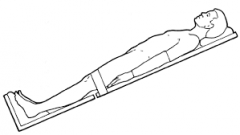
|
Reverse Trendelenberg: used for cases where the surgeon needs gravity to shift the abdominal contents toward the patient's foot (nissen fundoplication, lap chole, etc). Make sure to have a footboard to prevent patient from sliding out the foot of the bed.
|
|
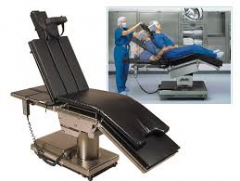
|
Beachchair position/Semi-Fowlers/sitting: Used for access to the patient's head or shoulders. At WHHS, this is primarily for shoulder and upper arm surgery. Dr. Kunwar's transphenoidals are also done semi-sitting, but without the special beachchair attachment.
|
|
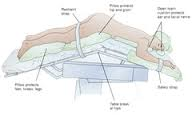
|
Jackknife Prone (Kraske): used primarily for hemorrhoid cases. MD can choose lithotomy or jackknife for these, so make sure to ask before you roll the patient back.
|

